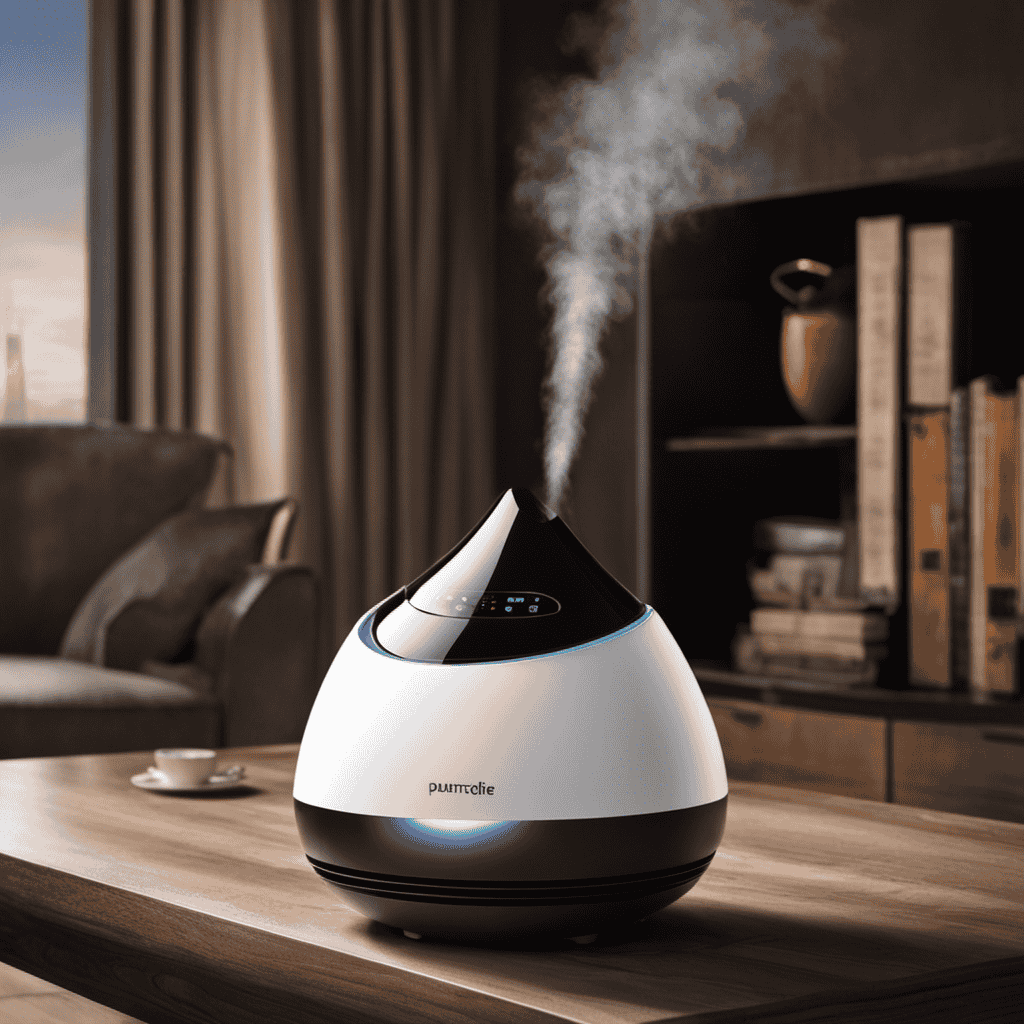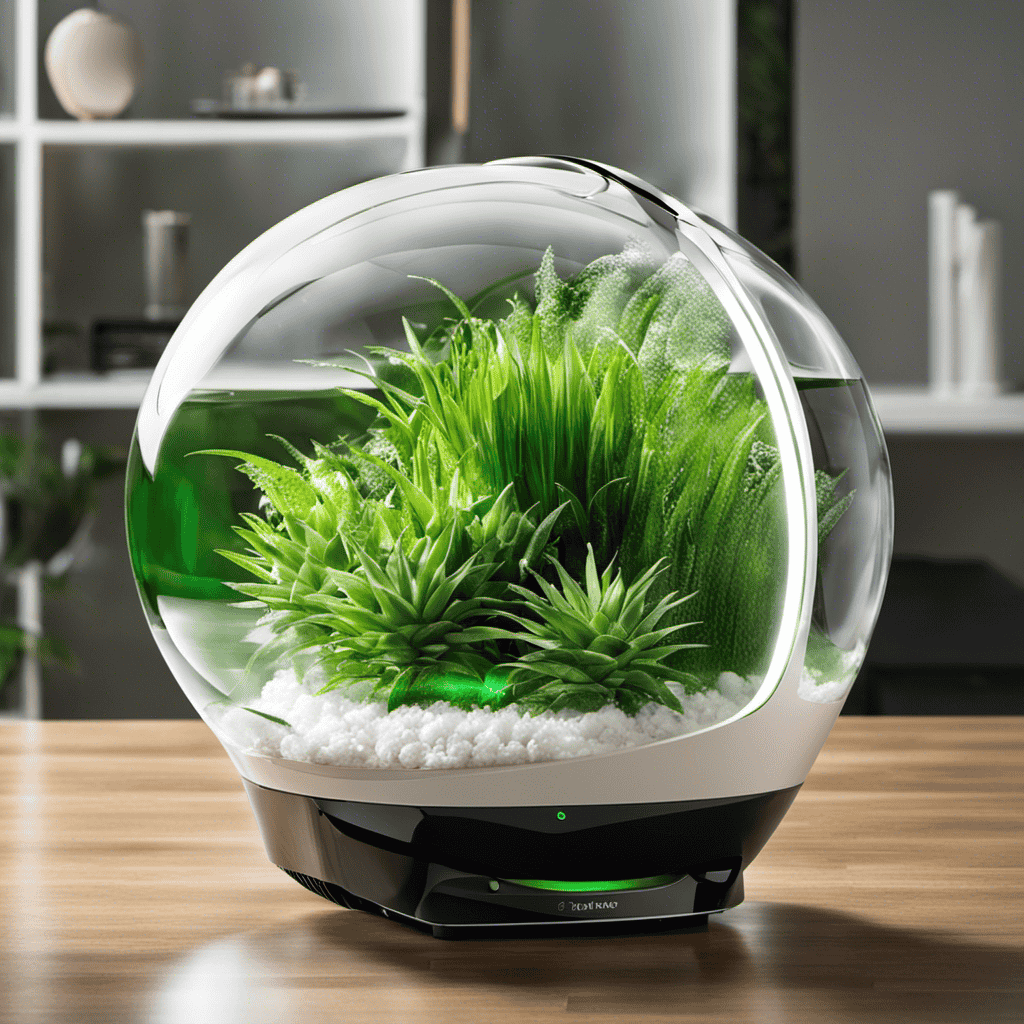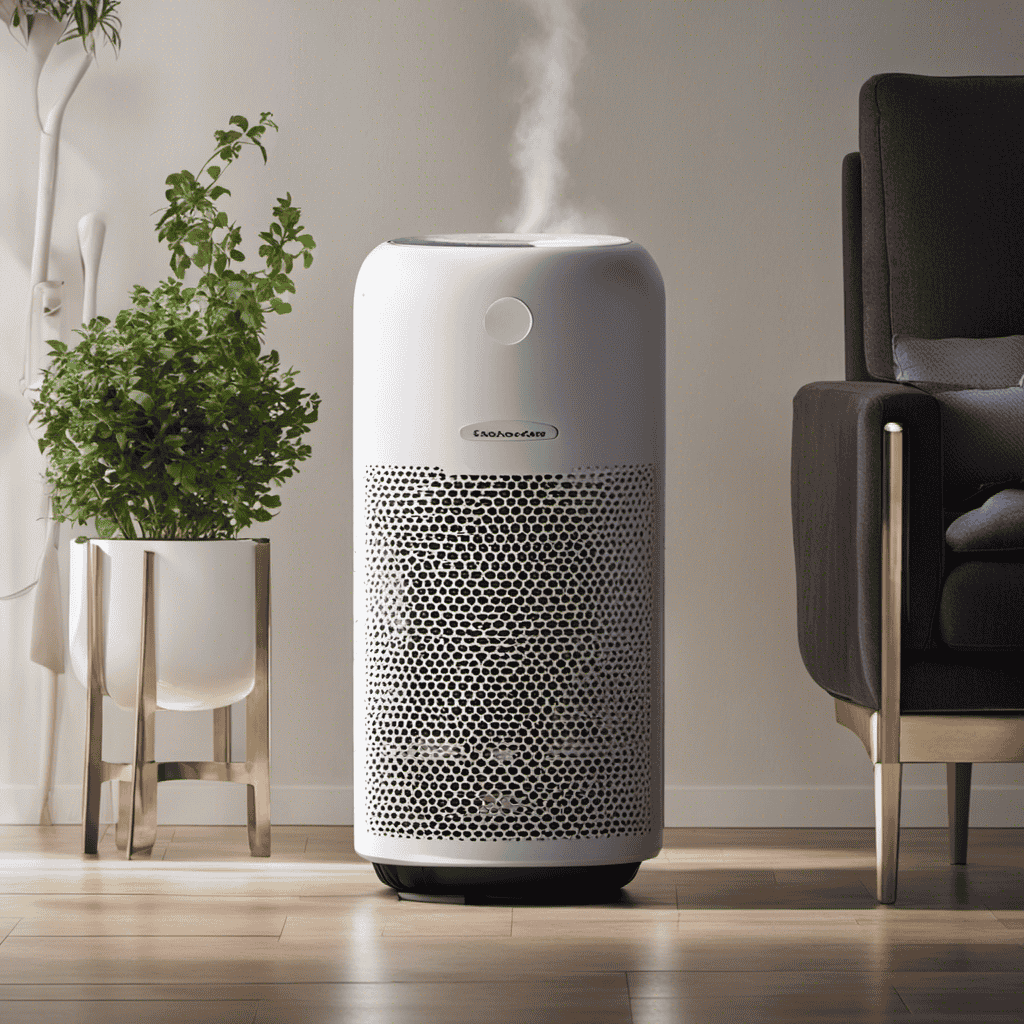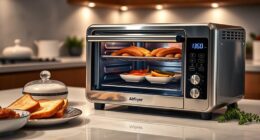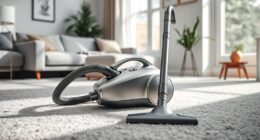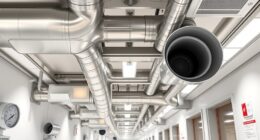Have you ever pondered about the functionality of the ‘ion’ setting on your air purifier? Allow me to explain it to you.
In this article, we will delve into the science behind ions, how ionizers work, and the benefits and potential drawbacks of ionization in air purifiers.
By understanding these ionization technologies, you’ll be equipped with the knowledge to make informed decisions about your indoor air quality.
So, let’s get started and unravel the mystery of ions in air purifiers.
Key Takeaways
- Ionization involves adding or removing electrons from atoms or molecules.
- Ionizers release negatively charged ions into the air.
- Ions attach themselves to airborne particles, effectively removing them from the air.
- Ionization in air purifiers can improve indoor air quality and reduce allergies and asthma symptoms.
The Science Behind Ions
If you’re wondering how ions work in air purifiers, let’s delve into the science behind them.
Ionization is a process that involves adding or removing electrons from atoms or molecules, creating charged particles called ions.
In the context of air purifiers, ionization plays a crucial role in improving indoor air quality.
When ions are released into the air, they attach themselves to airborne particles such as dust, pollen, and pet dander.
The charged particles then become attracted to surfaces like walls, floors, or furniture, effectively removing them from the air.
This process, known as ion-mediated allergen removal, helps to reduce the presence of allergens and other harmful particles in the air you breathe.
How Do Ionizers Work
Ionizers work by releasing negatively charged ions into the air, which attach to particles and cause them to settle out of the air. These ions are generated by the ionizer through a process called corona discharge.
The effectiveness of ionizers in removing particles from the air depends on several factors, including the size and type of particles, the concentration of ions in the air, and the airflow in the room.
Compared to other air purification technologies, ionizers have their advantages and limitations. They are effective in removing smaller particles such as smoke, pollen, and dust from the air. However, they may not be as effective in removing larger particles or gases.
Additionally, ionizers may produce ozone as a byproduct, which can be a concern for individuals with respiratory issues.
Overall, while ionizers can be a useful addition to air purification systems, it is important to consider their limitations and potential drawbacks.
Benefits of Ionization in Air Purifiers
You’ll appreciate the benefits of ionization in air purifiers because it helps to remove harmful particles from your indoor environment. Ionization is a process in which air purifiers release negative ions into the air. These negative ions attach themselves to positively charged particles such as dust, pollen, and pet dander.
Here are three key benefits of ionization in air purifiers:
-
Health Benefits: By removing harmful particles from the air, ionization helps to improve indoor air quality. This can have a positive impact on your health, especially for those with allergies or respiratory conditions.
-
Reduction of Odors: Ionization also helps to eliminate unpleasant odors in the air. The negative ions neutralize the positively charged odor molecules, effectively removing them from the environment.
-
Airborne Contaminant Removal: Ionization is effective in removing airborne contaminants such as bacteria and viruses. The negative ions disrupt the structure of these contaminants, rendering them inactive and reducing the risk of airborne transmission.
Potential Drawbacks of Ionization
Though ionization can improve indoor air quality, it is important to consider potential drawbacks as well. While ionizers are designed to remove harmful particles from the air, they can also produce negative effects and pose health risks. It is crucial to be informed about these potential drawbacks before using an ionization air purifier.
One of the main concerns with ionizers is the production of ozone. Ozone is a gas that can cause respiratory issues and aggravate existing respiratory conditions such as asthma. High levels of ozone can be harmful to both humans and animals. Additionally, some studies have suggested that ionizers may produce harmful byproducts, such as formaldehyde, which can have detrimental effects on health.
To help you understand the potential drawbacks of ionization, here is a table comparing the positive and negative aspects of ionization air purifiers:
| Positive Effects | Negative Effects |
|---|---|
| Removes harmful particles | Produces ozone |
| Improves indoor air quality | May produce harmful byproducts |
| Can reduce allergies and asthma symptoms | Potential health risks |
It is essential to weigh the benefits against the potential risks when considering the use of ionization air purifiers. Consulting with a professional and conducting thorough research can help make an informed decision about whether ionization is the right choice for you and your indoor air quality needs.
Understanding Ionization Technologies
Understanding how ionization technologies work can provide valuable insights into their effectiveness in improving indoor air quality. Ionization is a process in which air purifiers release charged particles, called ions, into the air. These ions attach themselves to airborne pollutants, such as dust, pollen, and smoke, causing them to become heavier and fall out of the air. There are different types of ionization technologies, including bipolar ionization and needlepoint ionization. These technologies differ in terms of how ions are generated and distributed in the air.
Bipolar ionization: This technology releases both positive and negative ions into the air, creating a balanced charge. It can effectively neutralize a wide range of pollutants.
Needlepoint ionization: This technology uses a needle-like electrode to produce ions. It is often used in smaller air purifiers and can be effective in reducing certain types of airborne particles.
When compared to other air purification methods, ionization technologies have several advantages. They do not require the use of filters, which can be expensive to replace. Additionally, ionization can eliminate odors and inhibit the growth of bacteria and viruses in the air. However, it is important to note that ionization technologies may produce ozone as a byproduct, which can be harmful in high concentrations.
Frequently Asked Questions
Are Ionizers Safe to Use in Homes and Offices?
Using ionizers in indoor environments has pros and cons. While they can help improve air quality by removing pollutants, they also release ozone which can be harmful to respiratory health.
Can Ionizers Effectively Remove Harmful Particles Like Allergens and Smoke From the Air?
I have found that ionizers can effectively reduce indoor pollution by removing harmful particles like allergens and smoke from the air. Compared to other air purifying technologies, ionizers are quite effective in this regard.
Do Ionizers Produce Any Harmful Byproducts Like Ozone?
Ionizers on air purifiers can produce harmful byproducts like ozone. However, their effectiveness in removing harmful particles such as allergens and smoke is still a matter of debate. Further research is needed to fully understand their impact on indoor air quality.
How Long Does It Take for Ionizers to Clean the Air in a Room?
Ionizers use ions to clean the air, but their effectiveness varies. They work by releasing negatively charged ions that attach to airborne particles, causing them to fall out of the air. However, ionizers are not as effective as air purifiers.
Can Ionizers Improve the Overall Air Quality in a Large Space or Only in Close Proximity to the Device?
Ionizers can improve overall air quality in large spaces by promoting better air circulation. The health benefits of ionization include reducing airborne pollutants, such as dust and allergens, which can lead to improved respiratory health.
Conclusion
After examining the science behind ions and how they work in air purifiers, it is clear that ionization technology offers numerous benefits.
The ability of ions to attract and neutralize harmful particles in the air is impressive.
However, it is important to be aware of potential drawbacks, such as the production of ozone in some ionizers.
Understanding the different ionization technologies available will help consumers make informed decisions when choosing an air purifier.
In conclusion, the captivating concept of ions in air purifiers can provide cleaner and fresher air for all.
